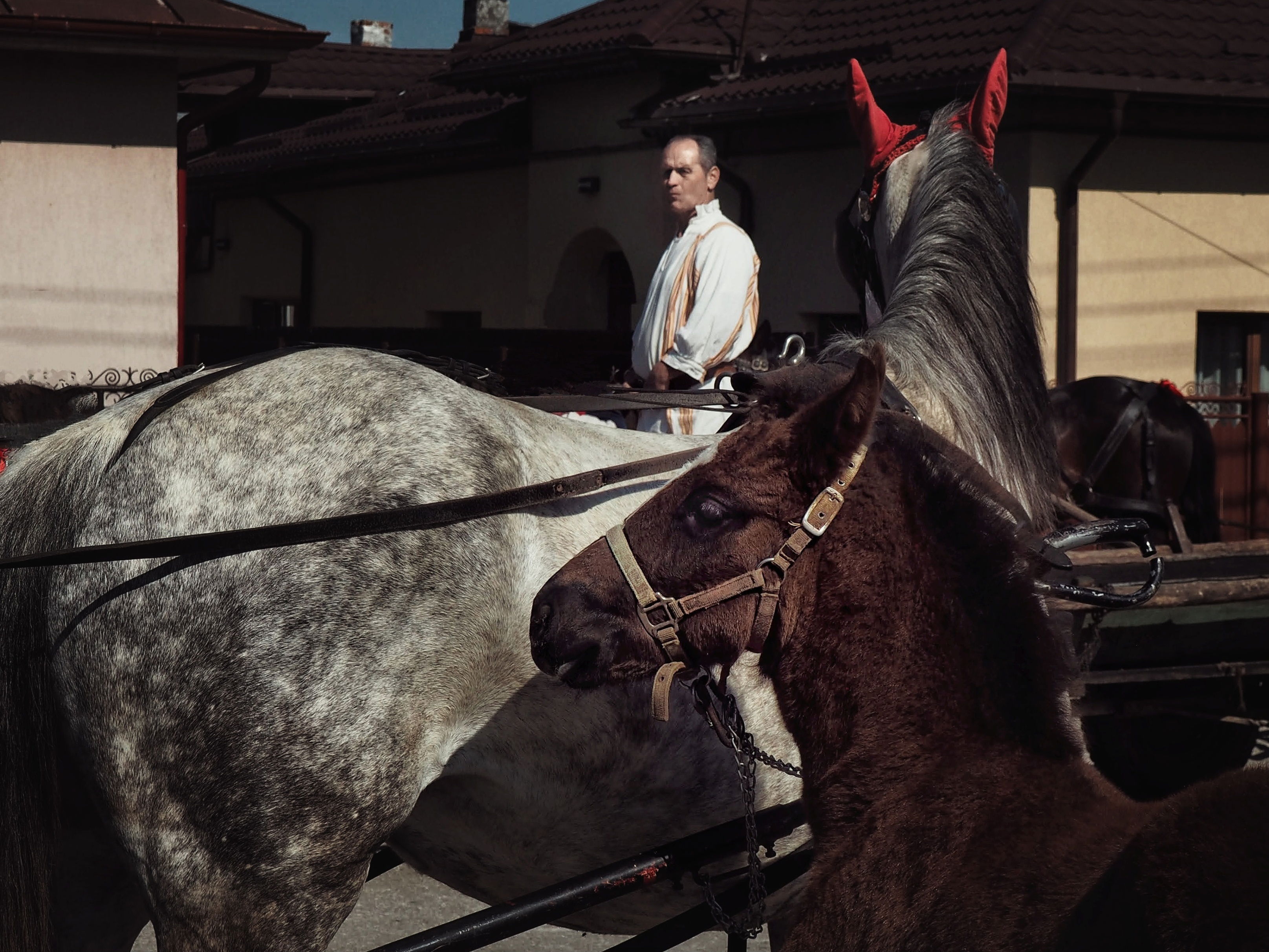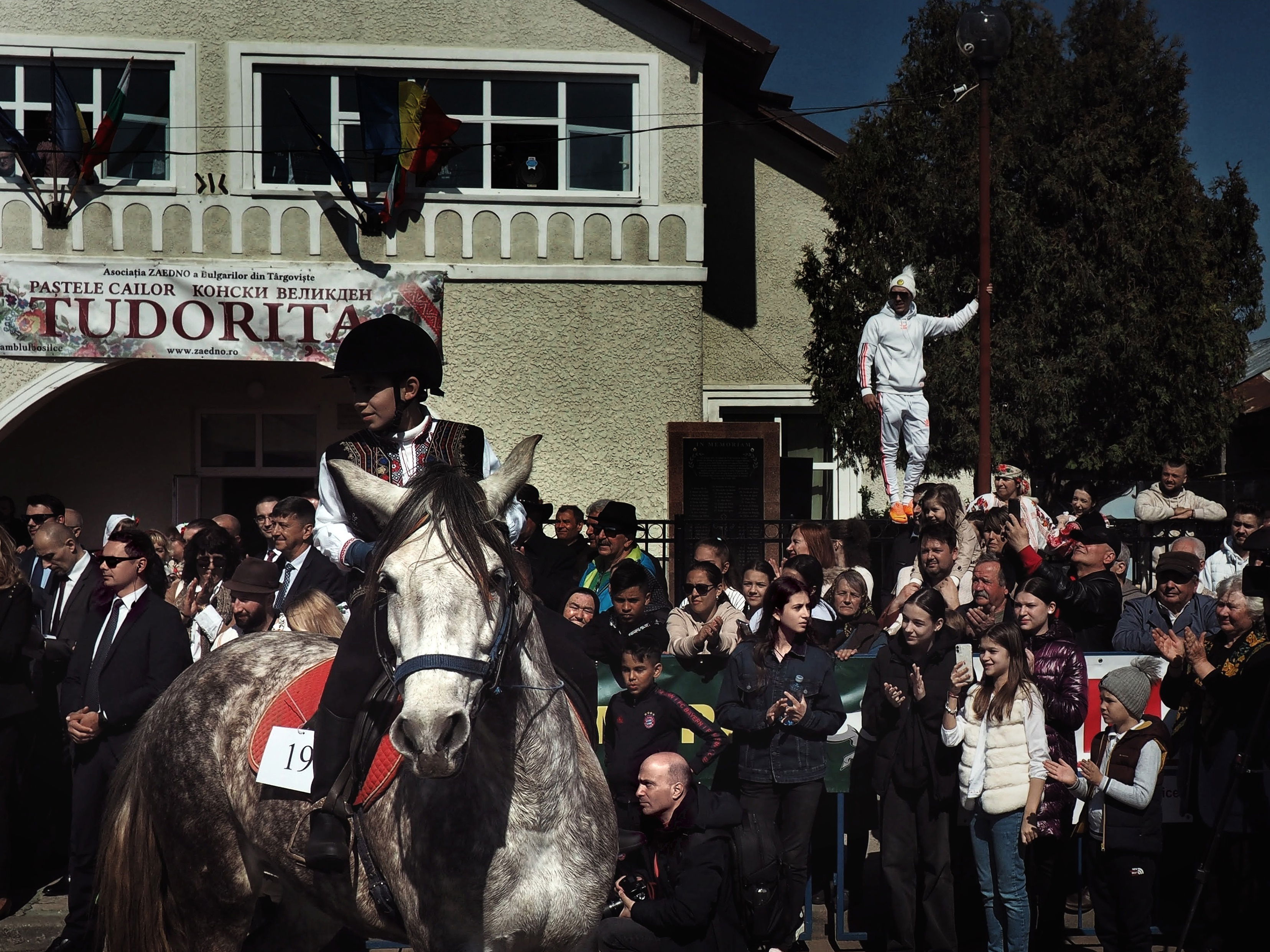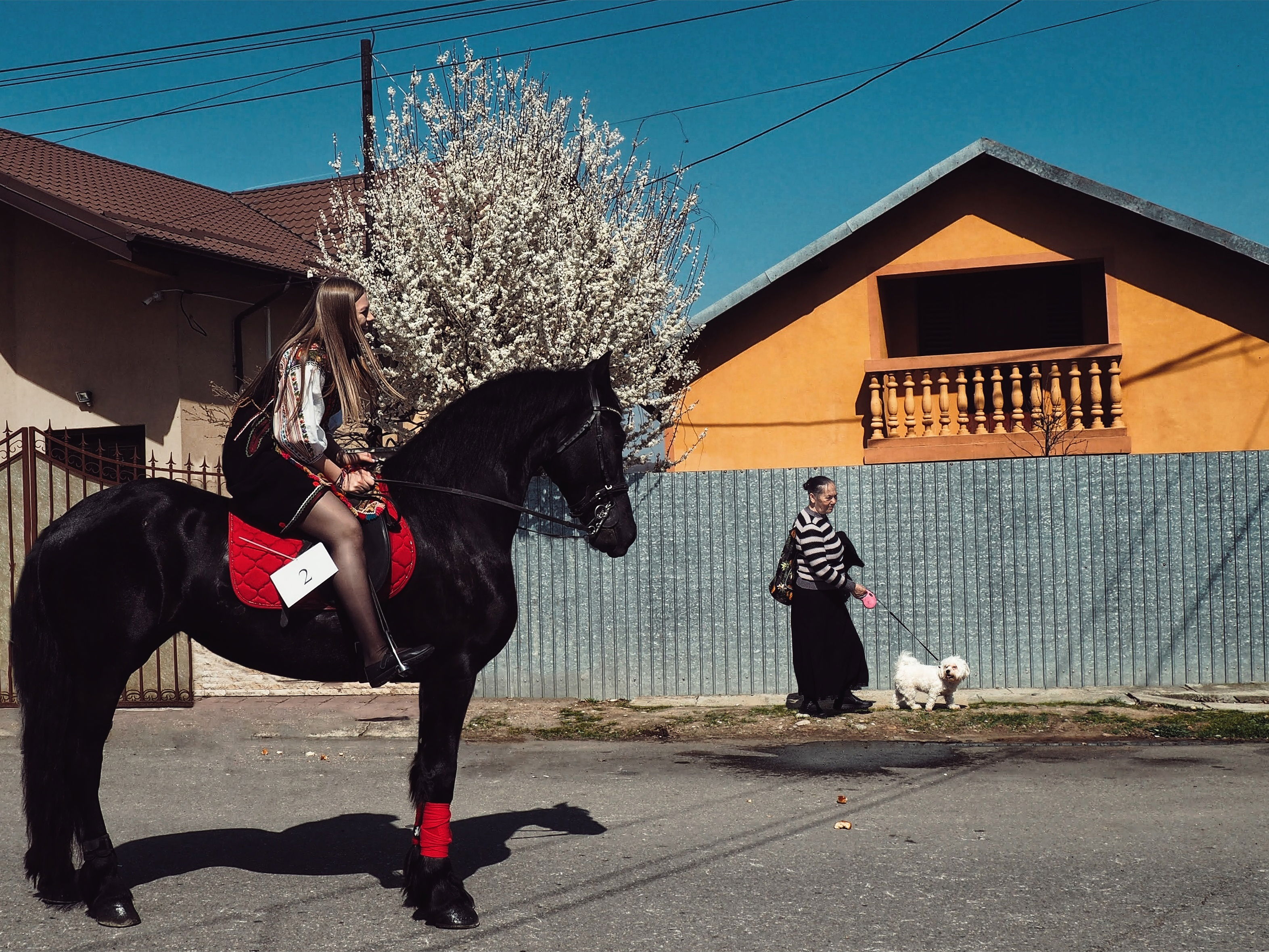The Horses Easter
The Horses Easter is a paradox: it means something very distant in time or something that will never happen, but on the other hand, it is also the name of two different holidays in Romania.
In the city of Târgoviște, located in the southern part of the country, this event symbolizes the beginning of spring agricultural work and is the liveliest and most anticipated holiday in the Bulgarian community's calendar. Held on the first Saturday of Lent in the Matei Voievod neighborhood, it is also known as Tudorița due to the popular belief that St. Theodore the Soldier, celebrated on this day, metamorphosed into a horse.

The other Horse Easter, also called Ispas, coincides with the Ascension and takes place when Orthodox and Catholics celebrate the Resurrection of the Lord at the same time. In Transylvania, where the custom originates, it was said that when the Hungarians celebrated their Easter, the Romanians would ask them for horses to work their land, and when it was the Romanians' turn to celebrate Easter, they would lend their horses to the Hungarians. The animals could enjoy uninterrupted rest and grazing only during the year when the two holidays coincided.

In Târgoviște, Bulgarian farmers decorate their horses with bells and red ribbons and gather at the Church of St. Nifon, where a service is held to bless some small Lenten breads, called koncete, which they then share with their animals. Priests go out into the street and sprinkle the horses with holy water, as in a baptism. This is followed by the parade of horses, carts, and carriages carrying proud families of Bulgarians dressed in traditional costumes. Purebred horses, horses used for field work, and spirited ponies parade through the neighborhood, greet the crowd, and majestically rear on two legs, being judged by a jury made up of local personalities.

The custom is unique in Romania and dates back to the Middle Ages when many Bulgarians were forced to flee from the Ottomans to the historical region of Wallachia. They were vegetable growers and they needed a ritual to ensure bountiful harvests year after year. The community in Târgoviște numbers around three thousand people, most of whom still speak authentic Bulgarian and preserve their traditions.

Text and photo: Ana Alexandrescu